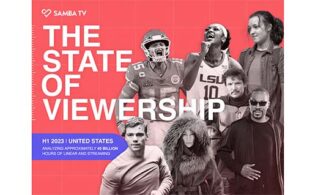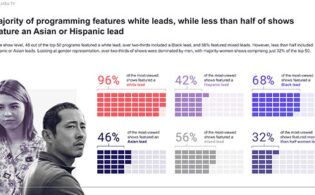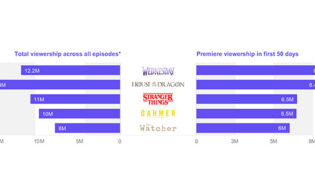A new report from data and audience analytics firm Samba TV has found that election events and the return of sports drove live TV viewing in the third quarter in the U.S.
Samba TV has released its first-ever State of Viewership Report for 2020, exploring television, movie, Connected TV (CTV) and advertising viewership in the U.S., U.K. and Germany.
“Despite what many have said, linear TV is far from dead,” said Ashwin Navin, co-founder and CEO of Samba TV. “Linear TV recovered in Q3, but not at the expense of CTV’s ongoing growth. Both are proving their staying power, bolstered by current events and the incredible diversity and quality of programming available across all platforms. While fragmentation accelerates, data will be the critical tool for marketers to plan their investments across linear and CTV. With our first State of Viewership report, we aim to arm brands with the key metrics they need to drive higher performance and eliminate media waste in this tumultuous landscape.”
In the U.S., election events—party conventions, the first debate and interviews with the presidential candidates—saw major swing states significantly over-index in viewership, as did key demographics like white Gen Xers and Boomers. Meanwhile, the NBA, MLB and NHL experienced high viewership rates, but these were still down compared to pre-pandemic games.
“There are many factors to consider for the general decline in viewership, including a three-month interruption across leagues creating a log-jammed competition for viewers’ eyeballs,” the report notes. “Other factors that contributed to this decline was the burgeoning election, increased cord-cutting, and movies skipping theaters and going straight to streaming.”
Samba TV reports that daily TV consumption in September was higher than it was any month this summer—U.S. homes watched more than 8.1 billion minutes of content. The U.K. and Germany saw increased consumption across networks by 13 percent and 10 percent, respectively, compared with the rest of the quarter.
Television advertising is beginning to increase again, the report adds, with linear TV ad airings up 18.5 percent between Q2 and Q3.
The report also indicates that interest in premium TV networks such as Cinemax, HBO and Showtime waned in September—”an indication that as sports and fall premieres ramped up, people were less willing to pay for content. Households earning over $125,000 are now the only group over-indexing in viewership across the three networks, compared to the rest of the U.S.”






